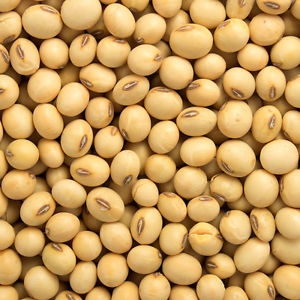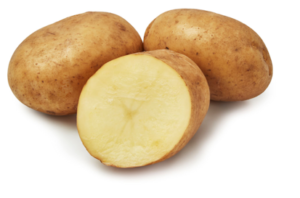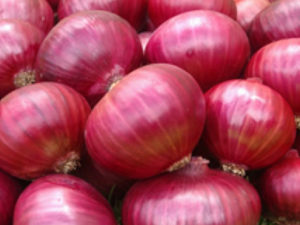The production unit will include:
- Field-crops
- 1,000 Ha Center Pivot’s irrigation machines for 2 annual production cycles of field crops such as maize, onion/carrot/potatoes, beans, wheat etc.
Field crops production
The center pivots allow production of diverse field crops all year around together with individual irrigated plots for domestic vegetable production. The center pivots will produce 2 seasons annually of seasonal field crops and vegetables such as: maize, wheat, soybeans, onions, carrots, potatoes and more.
Production and crop plan Crop Rotation
The crop plan is based on two crop rotation models. The main objective behind growing crops in rotation with others is to minimize cost of plant protection and to create a better soil nourishment environment. It has been proven that growing crops in rotation of 3 to 4 crops per farm can reduce operating costs significantly and raise yields altogether.
In addition to that growing several crops as in the plan has a positive effect on stabilizing the farms business output by not relying on prices of one or two crops that may fall.
The project is based on an area of 1,000 ha. However, due to irrigation necessity, the method chosen for irrigation was by center pivots that irrigate in circles leaving wasted land (that will although be cleaned) between the round pattern. The project design is based on about 20 center pivots of 50 ha each that equal to 1,000 ha cultivated land.
The crop plan and schedule of planting and harvest are based on climate patterns of Zambia.n Crops will be grown in seasonal cycles; rainy and dry seasons. In both season, crops will be irrigated. Cultivation technology will include Precision Agriculture methods with a GIS (Geographical Information System) technology embedded that is suitable for conditions in Zambia. The technology with GPS installed in all tractors and harvesters will eventually assist to run the farm with higher efficiency and accuracy resulting in lower operation costs and probably higher yields.
Main crops

Maize – Corn for grain will be grown in plantings of one seasons as shown in the following table. Grain corn will be planted after land preparation tillage into rows set 92cm apart with a precision 8 row drill. Fertilizer will be side dressed at the same time. Corn will be cultivated and sprayed with equipment included in the investment. It will be irrigated by a center pivot rotating irrigation system. Harvesting will be done after the corn ears dry up. Grain corn will be transported by a special set of field hook wagon bins by tractor or truck to the farm center. There the grain will be poured into the Grain Silo – It will be dried to 11% humidity, cleaned and stored in the Silo chamber bins for sale.
 Soya beans – Soya beans will be grown same season with the grain corn. Soya beans be planted after primary tillage on beds spaced 196 cm apart with 2 rows on each bed. Irrigation will be done by center pivot machines. Soybean will be planted cultivated, sprayed and harvested by machinery included in the farm investment. Harvest will be done by combine harvesters that will also handle corn and dry beans. The grain will be poured to a field hook wagon bin and hauled by truck or tractor to the farm grain silo. The grain will be dried to desired levels, cleaned and stored in the grain bins.
Soya beans – Soya beans will be grown same season with the grain corn. Soya beans be planted after primary tillage on beds spaced 196 cm apart with 2 rows on each bed. Irrigation will be done by center pivot machines. Soybean will be planted cultivated, sprayed and harvested by machinery included in the farm investment. Harvest will be done by combine harvesters that will also handle corn and dry beans. The grain will be poured to a field hook wagon bin and hauled by truck or tractor to the farm grain silo. The grain will be dried to desired levels, cleaned and stored in the grain bins.
Potatoes – Potatoes will be grown in a separate crop rotation after the maize and soybeans. Incorporating the dried straw of dry beans into the soil by primary tillage will have a positive nourishing effect on potatoes. The potatoes be grown in one cycles with nearly the same growing days.

Drying them out earlier or spraying herbicide to dry the leaves will mature the potato earlier if necessary.
The potatoes will be planted by machines, on furrow ridges spread 93 cm apart with one row per ridge. Seeds should be shipped from Europe or another source (South- Africa) that can supply certified planting material.
Irrigation will be by center pivot machines at night time only to prevent spreading disease. Harvest will be done by potato harvesting equipment. The combine will pour potatoes into a field hook wagon bin that will transfer potatoes to the packing house by truck or tractor; they will be washed clean with water, sorted and packed for market as a branded product.
 Onions – Onion will be grown in the rotation after the maize and soybeans.
Onions – Onion will be grown in the rotation after the maize and soybeans.
The onions will be of dry type varieties fit for mechanized harvesting, with taste and size for the local market. Onions will be planted by machinery on beds after primary tillage with four rows of plants per bed. They will be irrigated on dry spells by center pivot and cultivated with tools made specifically for onion.
Harvest will commence once the bulbs have dried out and the leaves fallen. A set of harvesting tools uproots the onion bulbs and leaves them to dry on the soil. A 2nd tool lifts the dried onions from the soil shakes of the earth and pours them into a field hook wagon bin towed by a tractor.
Budget: Total investment USD CFR LAGOS is 14,800,000